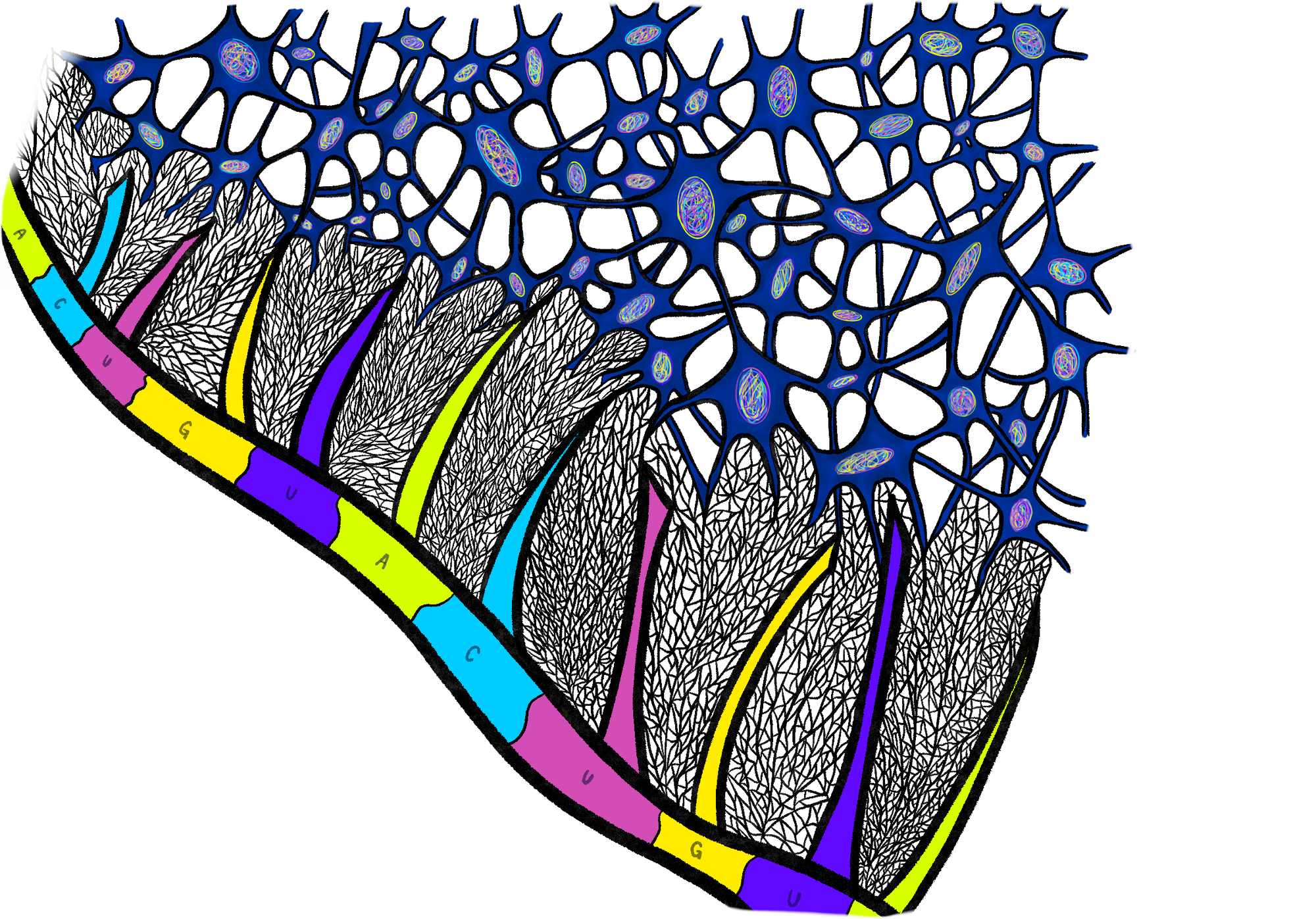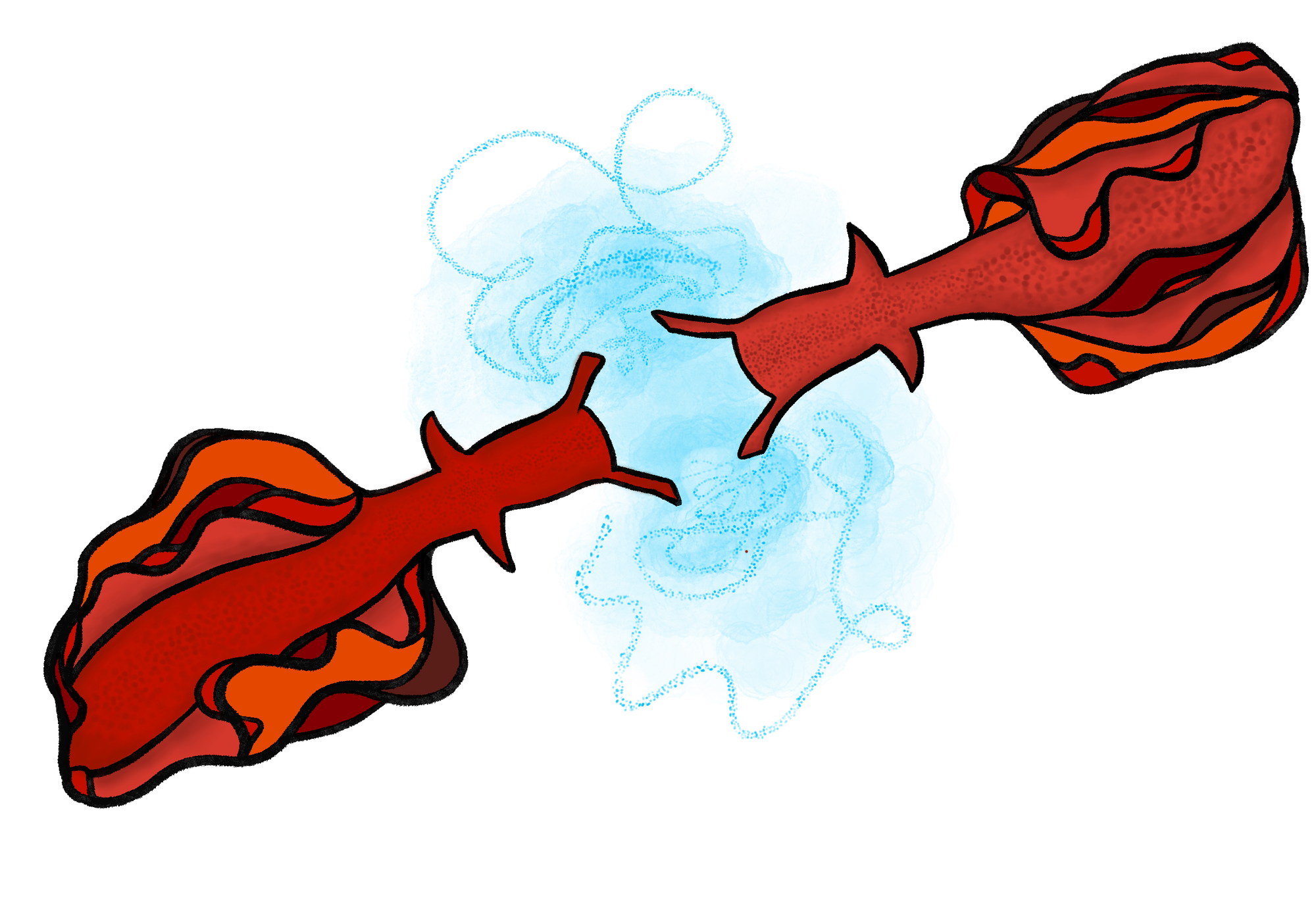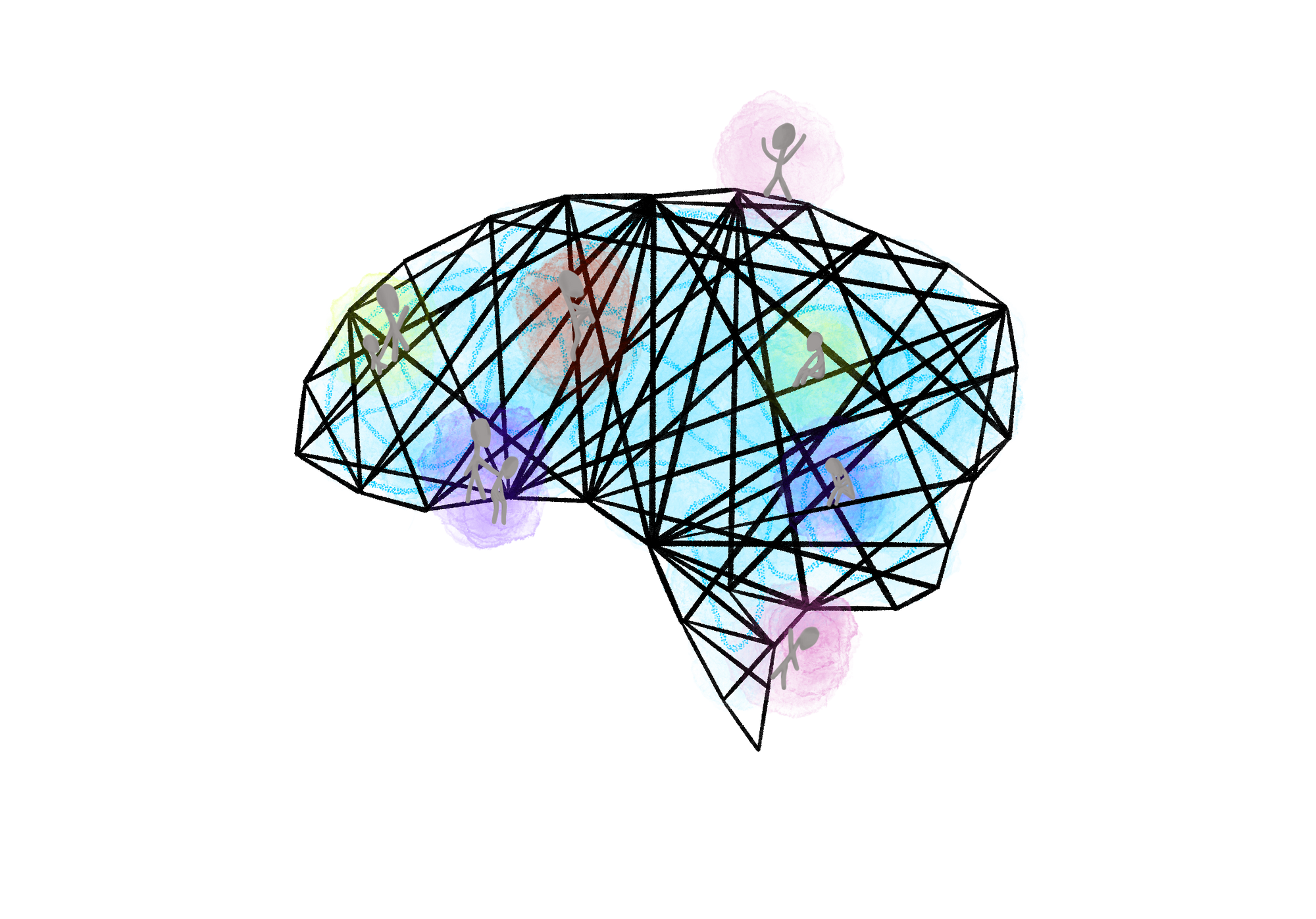Introduction
Try to recall your tenth birthday party. Specific details such as the color of the cake or the theme of your party are probably resurfacing in your mind right now. These pieces of information are stored as long-term memories and are readily available for recall. While memory recall is a very familiar process that we use every day, the mechanisms of memory are still being investigated. For example, remembering details is essential for our survival, as it helps us perceive known danger and refrain from repeating harmful mistakes. Researchers are curious about how the brain is able to encapsulate this information and present it during times of need. One possibility researchers have explored suggests that genetic alterations may be involved in memory formation and recall [1]. For example, researchers have suggested that different experiences produce different gene expressions in brain areas that are associated with storing long-term memory. In response to these experiences, our genetic material can be structurally altered by the environment and produce behavioral differences that may ultimately affect survival.
These facets of memory serve as motivation for new advances in research, such as the possibility of memory transfer via an organism’s genetic material. Research on Aplysia slugs suggests that behavioral responses to memories can be transferred through RNA, which induces epigenetic modifications in DNA [2]. These epigenetic modifications are changes made to DNA which affect gene expression and cell function without changing the original DNA sequence [2]. This understanding provides insight into manipulating memories for dementia treatment and evokes curiosity towards erasing distressing memories or adding pleasant ones for those who have experienced trauma, as traumatic experiences tend to leave their mark on cognitive systems and can transmit epigenetically as memories [3].
Biology of Memory Creation
The study of the biological basis of memory creation is ongoing, but researchers have been able to piece together some key biological mechanisms in the last decade. The hippocampus, an area of the brain in the temporal lobe, functions in processing and consolidating memory [4]. Memory can be divided into three types: sensory, short-term, and long-term. Information from our surroundings is stored in sensory memory for a brief amount of time. The hippocampus stores short-term memories and takes a few seconds to process information that is based on existing connections between neurons [4]. The hippocampus can also store information for up to a lifetime, in the form of long term memories, but this process involves structural changes to neurons such as the growth of new synapses [5]. The structural changes for long term memories can occur through modifying segments of DNA [2]. Most modifications of genes are associated with an increased amount of DNA methylation, which is a process where structural units called methyl groups are added to DNA, resulting in less gene transcription and expression [2]. DNA mimics the role of an instruction manual such that it provides directions for building or strengthening different “projects”, such as the proteins that make up neurons that contribute to memory storage. One role of RNA is to convert DNA’s directions into pieces that can be used to put together the final product, or the proteins. This instruction manual can be modified and transferred between organisms. A study performed on Aplysia californica sea slugs provides more information on the genetic basis of memory.

Aplysia californica Experiment
An interesting question that researchers are investigating is whether or not long term memory is subject to epigenetic modifications. The concept of regulating genes through environmental input is slowly becoming more understood; however, researchers are still not certain which mechanisms are a result of epigenetics [8]. The significance of epigenetic modifications is that gene expression is altered. By focusing on genetic molecules responsible for regulating gene expression, one goal is to gain a deeper understanding into how memories can potentially be shared. In other words, is it possible to artificially reproduce learned behavior, indicative of memory, through transplanting RNA molecules that are not translated into protein, otherwise known as non-coding RNA?
A study on adult Aplysia californica was performed to test this question. There were two groups of Aplysia californica studied in this experiment: the control group who did not receive sensitization training and the trained group. First, different experimenters tested how fast the siphon, a tube-like structure in the slugs, reacted when the structure was stimulated lightly with a probe [3]. This reaction is called the siphon-withdrawal reflex (SWR) and was measured quantitatively in seconds from the time the structure was in its resting state to when it bulged out of the slug. Afterwards, researchers gave the trained group of slugs sensitization training 24 hours apart for two trials. Sensitization training involved exposing the slugs to strong stimuli, such as a shock to their tails, over intervals of 20 minutes for 5 times per trial in hopes of enhancing the response of the SWR. Delivering the tail shocks in intervals was likely intended to prevent the slugs from being accustomed to the shocks and to ensure that their responses were more natural rather than conditioned. Non-coding RNA, which can induce DNA methylation and thus suppress gene expression, was extracted from the central nervous system of the control and trained group, then injected into Aplysia californica that did not receive sensitization training . Experimenters measured the SWR in each of the recipients for 24 hours after the RNA injection with the same procedure of stimulating the siphon with a probe. The mean SWR time for the slugs injected with control RNA increased from 1.2 seconds to 5.4 seconds, for a net increase of 4.2 seconds. In contrast, the mean for the slugs injected with trained RNA decreased from 56.4 seconds to 38.0 seconds, for a net decrease of 18.4 seconds. These results suggest that the SWR was faster in slugs who received an injection of RNA from the trained group of slugs as opposed to the control group [3].
Furthermore, the same researchers demonstrated the significance of DNA methylation, a type of epigenetic modification, by inhibiting its role when training the slugs. Aplysia were given sensitization training for two additional days and RNA was extracted from their central ganglia, a structure that relays information between the central and peripheral nervous system and has related functions to response time [3]. In this experiment, RNA from trained slugs was injected into a group of slugs who were also given an injection of a DNMT inhibitor, which regulates gene expression and turns on genes. Another group of slugs were injected with a control solution. The group who received the control solution showed a faster SWR 24 hours later, while the group that received the DNMT inhibitor did not show behavioral changes. Therefore, the researchers concluded that DNA methylation is likely required for the consolidation of the RNA-induced SWR [3].
All in all, the researchers concluded that epigenetic modification is crucial for RNA-induced enhancement of the SWR. Non-coding RNA molecules, extracted and transferred between the slugs, directed the addition of DNA methylation to the appropriate DNA molecules [2]. The finding that RNA from trained Aplysia californica can transfer identical behavior for sensitization ultimately offers new insights into memory storage. It has been long believed that memory is mainly contained within synapses between neurons, however, the research conducted on Aplysia californica introduces possibilities for traces of genetic modification generated from stress-related behaviors to be found in DNA [3]. This finding uncovers the possibility of a new function for genetic molecules, as well as the possibility to manipulate memories through genetics.

Epigenetic Modification & Intergenerational Trauma
Experiences encoded into our long-term memory are typically salient. Research shows that the changes to gene expression made by epigenetic modifications can lead to behavioral differences in the parent and their offspring [9]. This type of vertical or generational transmission can be used to study intergenerational trauma. The Dutch Hongerwinter, which began towards the end of World War II, consisted of a massive starvation period as a result of supplies being cut off. Research on witnesses to historical tragedies such as the Dutch Hongerwinter shows evidence that children conceived during this adverse time period exhibited epigenetic regulation of insulin-like growth factor II (IGF2), key for human development and growth, in their genetic makeup. To study epigenetic regulation, researchers measured the amount of DNA methylation that occurred in the region of IGF2. DNA methylation is important because the process mediates gene expression in a heritable way, as methylation can be transmitted to offspring specifically during cell division stages such as mitosis. In this process of cell division, replicated chromosomes that hold genetic material are separated into two nuclei [9]. To maintain the structure of the chromosomes especially during cell division, molecular markers such as methyl groups coupled to cytosines in cytosine-guanine (CpG) dinucleotides and histones that package DNA are crucial [10]. These methyl groups were particularly of interest to researchers studying the Dutch Hongerwinter. Researchers sampled 60 offspring conceived during the famine and measured five CpG dinucleotides within the region where IGF2 is found. Their results were compared against the exposed individuals’ same-sex siblings to determine how methylation differs in offspring when mothers give birth during the time of the trauma versus after the fact. The experiment concluded that offspring conceived after the trauma period were associated with a 5.2% lower methylation than during prenatal conception, who showed higher methylation [10]. This indicates that offspring that were conceived during the trauma had higher methylation in the IGF2 region. Since the offspring did not experience the trauma themselves, the results suggest that the epigenetic modifications occurred through intergenerational transmission.
The study of the Dutch Hongerwinter individuals suggests that offspring exhibited effects of their parent’s experiences and memories despite not having experienced the trauma themselves. Additionally, epigenetic molecular markers are vulnerable during the early stages of mammalian development [10]. This study in particular assessed the susceptibility of methylation in the IGF2 region, but more research needs to be done to know the extent to which other molecular markers in different regions are affected through epigenetics. Lastly, larger and more replicated studies on diseases that also result from prenatal trauma can offer a deeper understanding to the power of epigenetics on human development and suggest new disease prevention alternatives [10].
Conclusion
Memory research using animal models has supported the idea of transferring essential components of long-term memory through epigenetics. Given the complexity of the brain, researchers have yet to determine which specific molecules, other than RNA, can be responsible for carrying instructions that can influence memory formation. In addition, future research is needed to explain how transplanting non-coding RNA interacts with Aplysia californica neurons to produce a similar behavioral response. The newly understood function of RNA molecules as potential carriers of memory is a significant finding in the scientific community and continues to prompt more questions about the role of genetics in memory and epigenetic modifications. While investigating case studies of intergenerational trauma in humans has provided insight into the impact of prenatal trauma on offspring, neurobiological mechanisms of human memory are difficult to understand due to ethical guidelines. Future research into the components of the epigenome as it relates to memory and RNA memory transfer hopes to uncover whether or not select memories can be enhanced or suppressed using the newly acquired information of where they are stored. Investigating these questions through continued research will bring us closer to developing an idea of how our own brains process and remember information. This understanding can provide insight into complex cognitive processes such as psychological disorders as well as provide a clearer understanding of how intergenerational trauma affects people of different demographics or where else memory could possibly be stored.
References
- Sagar, V., & Kahnt, T. (2018). Genetic signatures of memories. eLife, 7, e36064. https://doi.org/10.7554/eLife.36064
- Erdmann RM, Picard CL (2020) RNA-directed DNA Methylation. PLoS Genet 16(10): e1009034. https://doi.org/10.1371/journal.pgen.1009034
- Bédécarrats, A., Chen, S., Pearce, K., Cai, D., & Glanzman, D. L. (2018). RNA from Trained Aplysia Can Induce an Epigenetic Engram for Long-Term Sensitization in Untrained Aplysia. eNeuro, 5(3), ENEURO.0038-18.2018. https://doi.org/10.1523/ENEURO.0038-18.2018
- Camina, E., & Güell, F. (2017). The Neuroanatomical, Neurophysiological and Psychological Basis of Memory: Current Models and Their Origins. Frontiers in pharmacology, 8, 438. https://doi.org/10.3389/fphar.2017.00438
- Byrne , J. H. (n.d.). Learning and memory (section 4, Chapter 7) neuroscience online: An electronic textbook for the Neurosciences: Department of Neurobiology and Anatomy - the University of Texas Medical School at Houston. Learning and Memory (Section 4, Chapter 7) Neuroscience Online: An Electronic Textbook for the Neurosciences | Department of Neurobiology and Anatomy - The University of Texas Medical School at Houston. Retrieved October 24, 2021, from https://nba.uth.tmc.edu/neuroscience/m/s4/chapter07.html.
- Bisaz, R., Travaglia, A., & Alberini, C. M. (2014). The neurobiological bases of memory formation: from physiological conditions to psychopathology. Psychopathology, 47(6), 347–356. https://doi.org/10.1159/000363702
- Moroz L. L. (2011). Aplysia. Current biology : CB, 21(2), R60–R61. https://doi.org/10.1016/j.cub.2010.11.028
- Wei, J.-W., Huang, K., Yang, C., & Kang, C.-S. (2017, January 1). Non-coding RNAS as regulators in epigenetics (review). Oncology Reports. Retrieved November 10, 2021, from https://www.spandidos-publications.com/10.3892/or.2016.5236
- Susanne R. De Rooij, Laura S. Bleker, Rebecca C. Painter, Anita C. Ravelli & Tessa J. Roseboom (2021) Lessons learned from 25 Years of Research into Long term Consequences of Prenatal Exposure to the Dutch famine 1944–45: The Dutch famine Birth Cohort, International Journal of Environmental Health Research, DOI: 10.1080/09603123.2021.1888894 https://www.tandfonline.com/doi/full/10.1080/09603123.2021.1888894
- Heijmans, B. T., Tobi, E. W., Stein, A. D., Putter, H., Blauw, G. J., Susser, E. S., Slagboom, P. E., & Lumey, L. H. (2008). Persistent epigenetic differences associated with prenatal exposure to famine in humans. Proceedings of the National Academy of Sciences of the United States of America, 105(44), 17046–17049. https://doi.org/10.1073/pnas.0806560105
